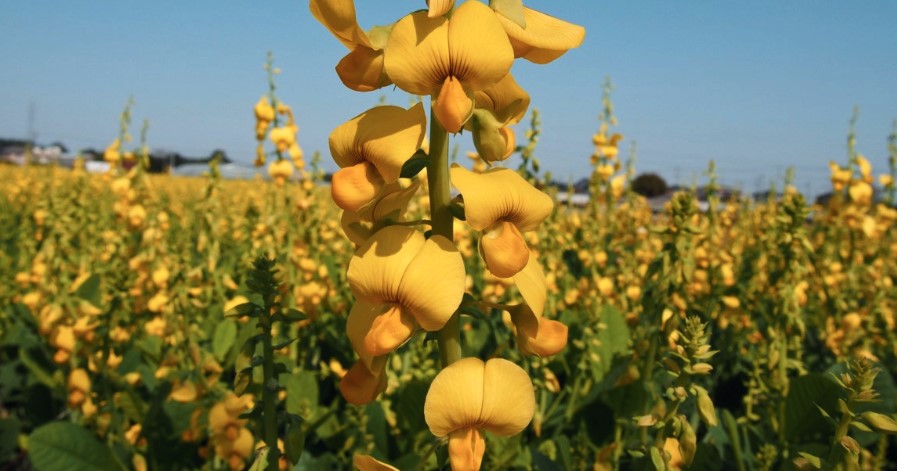


Crotalaria spectabilis is one of the species featured in the guide (photo: Larissa Bortolo/reproduction)
Published on 03/19/2025
Agência FAPESP – The Soil Health & Management Research Group (SOHMA) of the Luiz de Queiroz College of Agriculture of the University of São Paulo (ESALQ-USP) has launched a new edition of the Practical Guide to Cover Crops: Species, Management and Impact on Soil Health.
The book is associated with the Center for Carbon Research in Tropical Agriculture (CCARBON) and deals with the subject of cover crops, providing a synthesis of practical information on more than 70 cover crop options, including 63 species and eight options for mixtures and consortia.
CCARBON is a FAPESP Research, Innovation and Dissemination Center (RIDC) based at ESALQ-USP. Its mission is to develop innovative solutions to strengthen low-carbon tropical agriculture.
“This book is a guide for producers, technicians, consultants, students and even researchers to learn more about the characteristics of each cover crop. We hope it’ll support decision-making on the adoption of these plants in the field. The use of cover crops is one of the greatest opportunities that Brazilian agriculture has to become more productive, sustainable and resilient to climate change,” Maurício Roberto Cherubin, professor at Esalq and organizer of the publication, explained to Agência FAPESP.
The revised second edition also expands the content, including new chapters on the benefits, challenges, and management of cover crops in agricultural systems and on the selection and positioning of plant mixtures. In addition, around 20 new species have been included for use as cover crops.
“The book has certainly become more complete, more didactic and even more useful for farmers, technicians, consultants and researchers to learn more about the use of cover crops in Brazilian agriculture,” says Cherubin.
The book is available free of charge in digital format at: www.livrosabertos.abcd.usp.br/portaldelivrosUSP/catalog/book/1340.
Source: https://agencia.fapesp.br/54243